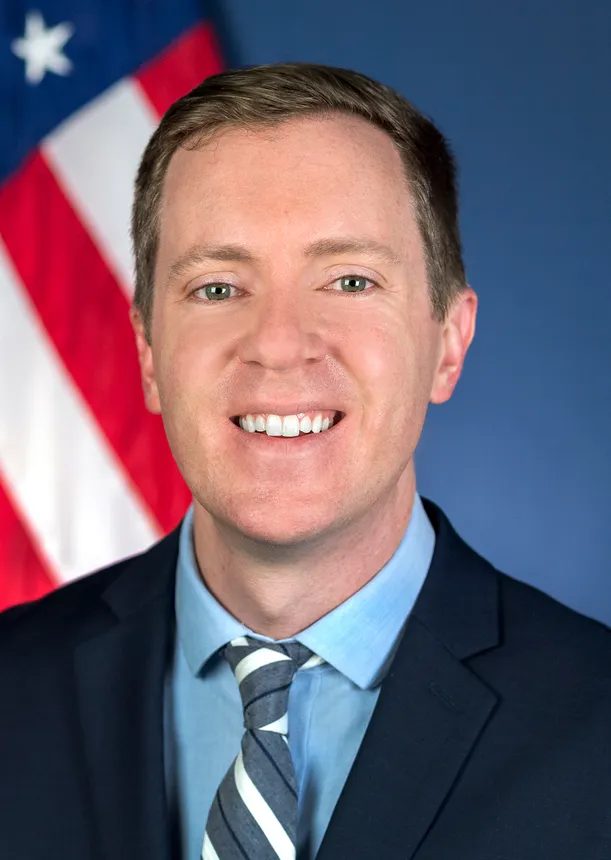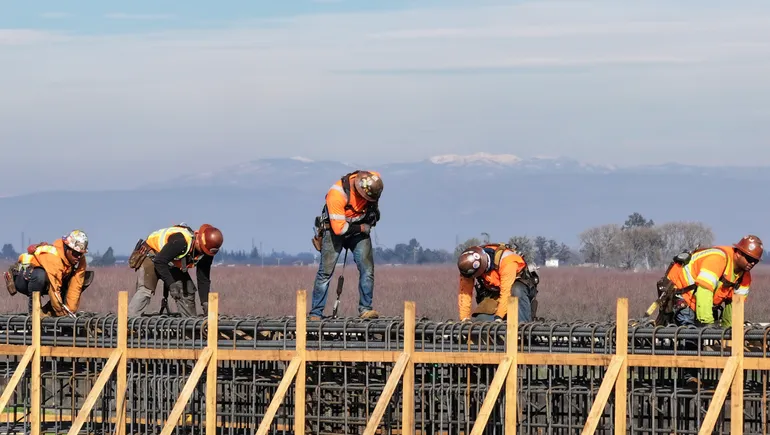A slew of changes are coming under the Trump administration for infrastructure builders working in the U.S.
Despite anxiety around his tariff and mass deportation promises, the construction industry is optimistic about the return of a fellow builder to the Oval Office. The importance of infrastructure is largely acknowledged as a bipartisan issue, said Mary Scott Nabers, CEO of Austin, Texas-based Strategic Partnerships, a government procurement consultancy.
“I think that the construction industry should feel very positive about 2025,” Nabers said. “From all indications, the next three or four years will be very good for the construction industry.”

Mary Scott Nabers
Permission granted by Mary Scott Nabers
There’s plenty of work to be done: Not only the country’s massive repair backlog, but also burgeoning demands for climate resilience, tougher infrastructure cybersecurity and new energy sources to power the rapidly growing domestic data center and manufacturing industries.
Here are five key ways that President-elect Donald Trump could impact civil construction in the year ahead:
Potential impact to IIJA funding
Three years into the five-year, $1.2 trillion Infrastructure Investment and Jobs Act, Biden will pass the baton to Trump with a sizable chunk of money left. The new administration will have to staff up and get up to speed with the IIJA’s many programs.
IIJA funds are on track to be awarded in their entirety in the five-year timeframe, per analysis from Washington, D.C.-based think tank Brookings, but that money hasn’t necessarily hit jobsites yet and it will take years after the IIJA expires for all of its projects to be completed. It’s possible for Trump to claw back some funds or shift them around.
“The Biden administration still leaves the Trump administration with $294 billion to award, including $87.2 billion in competitive grantmaking, where Trump’s agency staff will personally determine the winners,” according to Brookings.
Indeed, it is safe to assume the Trump administration will conduct a comprehensive review of the IIJA and “seek to roll back those portions of the bill that he deems to be excessive spending,” said experts at law firm Holland and Knight.
Although it’s impossible to know what Trump and his appointees will do, Highway Trust Fund dollars and advanced appropriations are largely safe, according to SmartBrief. Nabers believes much of the infrastructure funding that the construction industry benefits from will stick around until at least fiscal year 2026.
“Dismantling the infrastructure programs, since they’re primarily about infrastructure and water and critical needs, is not likely to be a high priority for the new administration,” Nabers said. “Trump’s team will likely extend the [Transportation Infrastructure Finance and Innovation Act] and [Water Infrastructure Finance and Innovation Act] and the community development block grant programs, and that spurs a lot of construction.”
More focus on traditional infrastructure and rural areas
Nonetheless, the new administration brings new priorities. Trump may seek to defund high-speed rail projects, per Holland and Knight, and he has been critical of electric vehicle efforts.
Trump will likely focus funding on traditional infrastructure like roads and bridges, said Alex Etchen, vice president of government relations at Associated General Contractors of America.
“Those large discretionary grants run out of U.S. DOT, I think you’ll see them reprioritize project selections,” said Etchen. “I think you’ll see a shift away from the electric vehicle focus, the climate change reduction or carbon reduction focus that we saw under the last administration.”

Alex Etchen
Permission granted by AGC
The Trump administration will also likely move more money to rural areas, said Etchen.
“In their first term, they really made a priority to ensure rural [areas] got [their] fair share of infrastructure funding,” Etchen said.
Emphasis on P3s
In his first term, Trump refused to support an infrastructure bill that didn’t have a massive private-sector contribution, and he will likely continue to advocate for funding projects that way.
“It does appear that Trump’s team will push public-private partnerships, and also find other ways to incentivize private sector investment,” said Nabers. “There’s not enough public funding, and there won’t be 10 years from now, to fix all the infrastructure needs that we will have to address in our continually evolving world.”

Frank Banda
Permission granted by Frank Banda
Public opinion is sometimes negative towards P3 projects and Trump once called them “more trouble than they’re worth.” However, he ran on reducing government spending, so they’re a funding tool he’s likely to use, according to Frank Banda, managing partner – Government and Public Sector Advisory at New York City-based accounting firm CohnReznick.
“The reality is, I think the P3s are to continue to help us accomplish what we need to accomplish,” Banda said. “We’re going to need a partner to help us get these things done.”
Weaker NEPA, faster permits
As president, Trump took a slew of actions to speed the permitting process for construction projects. He issued executive orders in 2020 curbing NEPA, the Endangered Species Act and the Clean Water Act — and will likely do so again, per Holland and Knight.
Trump’s first term offers clues as to what he could accomplish quickly, without involving Congress. Executive orders he made include concurrent reviews, lead federal agency page limits, deadlines for approvals and repercussions if those deadlines aren’t met, said Etchen.
“We’re anticipating he will revert back to that policy in the beginning of his second term,” said Etchen. “We’re also hopeful for a broader permitting reform getting through Congress.”
The environmental review process has slowed down the launch of infrastructure megaprojects in particular, per Nabers, and Trump recently indicated that permit speed is top of mind. In a Dec. 10 post on his Truth Social site, Trump said anyone making a $1 billion investment in the U.S. “will receive fully expedited approvals and permits, including, but in no way limited to, all Environmental approvals.”
A case being mulled in the Supreme Court — Seven County Infrastructure Coalition v. Eagle County — also has the potential to drastically weaken NEPA reviews.
Builders are also hoping for updates to the Build America, Buy America program, which mandates certain domestically manufactured materials on federal projects. GCs continue to be frustrated by the slow and convoluted BABA waiver process, according to Etchen.
“One of the things we advocate for is that waiver requests should be posted the day they receive them, and they should not require, you know, the White House signing the permission slip for them to be posted on a publicly available website,” Etchen said.
Looking for waste and fraud
Bolstered with a new Department of Government Efficiency, builders should expect an administration hyper-focused on rooting out waste and abuse of federal funds, according to Banda.
“There will be probably more oversight, integrity monitoring even, and accountability, because there’s an increased focus on reduction of fraud, waste and abuse,” Banda said. “The agencies that [builders are] working with will probably need to put in place some robust controls.”
How can contractors prepare? Get your paperwork in order, according to Banda.
“[Builders are] going to have to demonstrate that they have systems and controls in place to manage these projects and control the costs associated with these projects,” Banda said.
